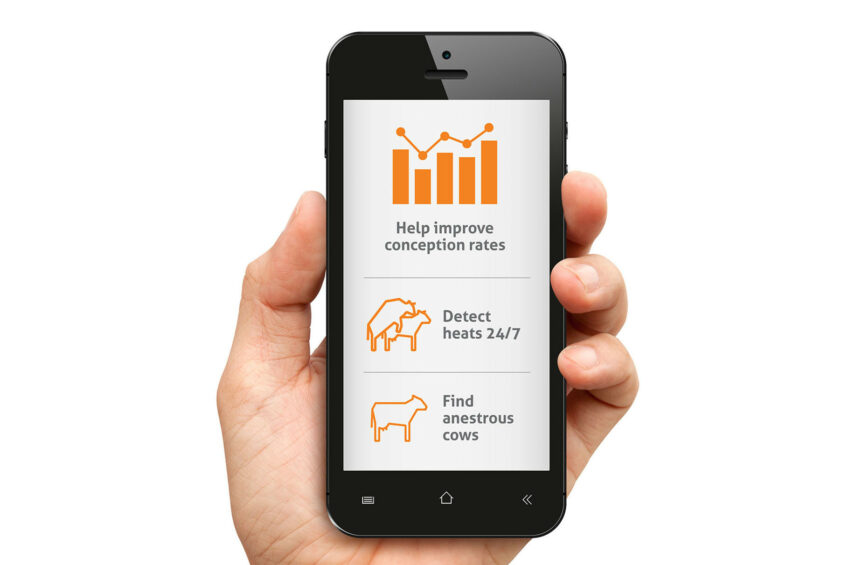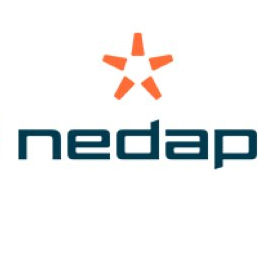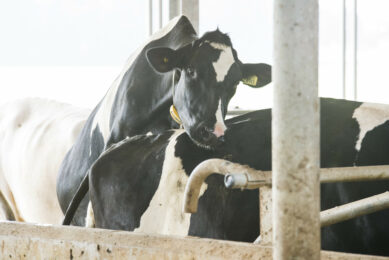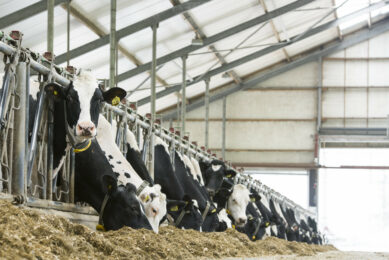2 reasons why activity monitoring matters for reproduction

If an open cow costs € 2 per day, then a single missed heat can cost you € 42. In today’s dairy economy that’s a lot of money to use some place else, especially if multiple heats are missed.
“When heats aren’t detected, it leads to more time and labour spent tracking, sorting and breeding cows,” says Rudie Lammers, product manager for Nedap. “Activity monitoring systems help dairy farmers catch cows in heat for timely insemination.”

Here are 2 reasons an activity monitoring system can get more cows pregnant faster and keep money in your pocket:
 Track cow activity 24/7
Track cow activity 24/7
Although you can visibly detect a cow standing to be mounted, it is not fail-proof. And it’s not realistic to monitor cows 24/7. There are only 1.5 mounts per hour per cow and each mount lasts 4-6 seconds. A cow’s heat lasts 6-8 hours. Collectively, these numbers tell us cows are in heat for one-third of the day and spend just 3-5 minutes standing to be mounted. That’s a very small window to catch a heat.
Heat activity of cows tends to be lowest during feeding and milking times – the times you or your staff are most likely with the cows. Cow activity is at its highest while you’re probably sleeping. Approximately 70% of mounting occurs between 7 p.m. and 7 a.m., when cows have limited distractions.

“Activity monitoring takes on the full-time job of heat detection,” says Mr Lammers. “These systems also rely on other indicators, like sniffing and chin resting, to make sure heats don’t get missed. Insights can also tell you the optimum time to inseminate for the highest chance of conception.”
 Quickly find cows not showing heat
Quickly find cows not showing heat
Sometimes a cow won’t show a heat because of environmental or metabolic factors, like floor surface, sore feet or legs, heat stress or ketosis complications. Also, she simply may not be cycling (annovular). With an activity monitoring system, you can act proactively by finding these problem cows quicker, then solving the cause of the fertility problem or providing an effective treatment to resolve it – ultimately, getting them bred faster.

“Instead of missing the heat altogether and waiting for the next cycle, activity monitors give you actionable insights to dig deeper into why a cow didn’t come into heat,” says Mr Lammers. “Insights can help you make a management decision to get a cow bred as quickly as possible, regardless of why she isn’t showing heat.”
Using an activity monitoring system allows you to catch cows in heat and take early action when there’s a problem. The result? Improved reproductive outcomes and money in your pocket. To learn more about automated activity monitoring systems visit nedap.com/dairyfarming.
References available on request
Join 13,000+ subscribers
Subscribe to our newsletter to stay updated about all the need-to-know content in the dairy sector, two times a week.




